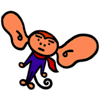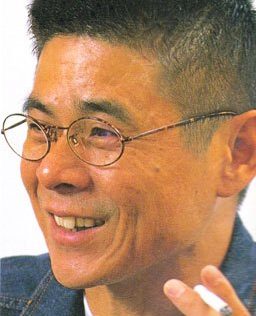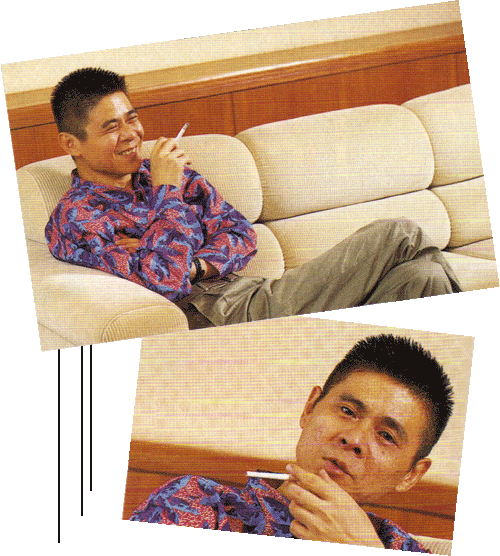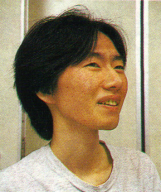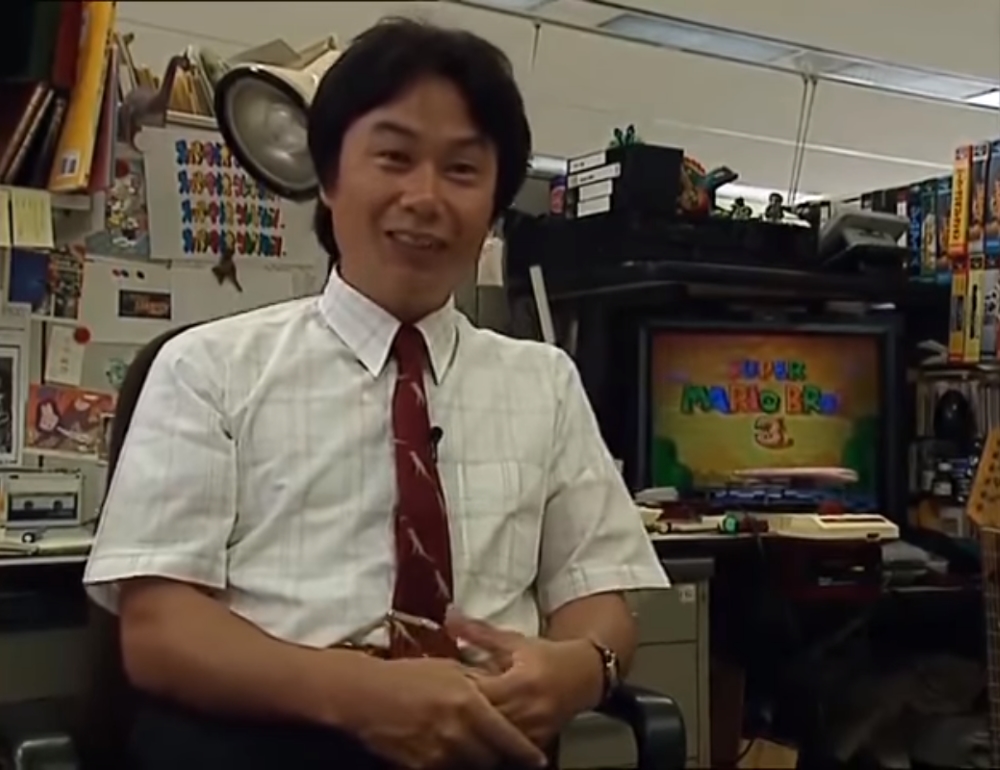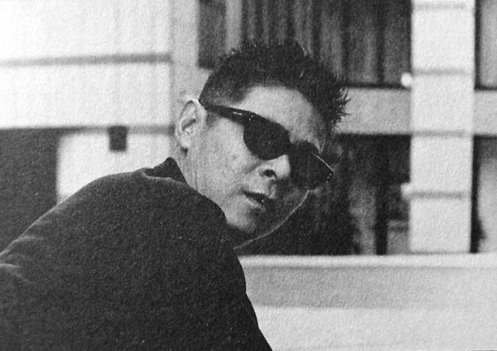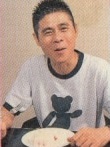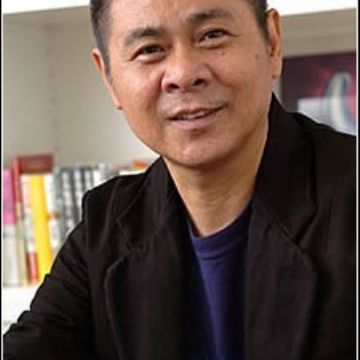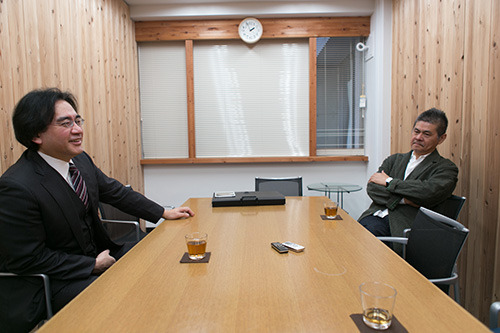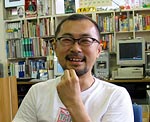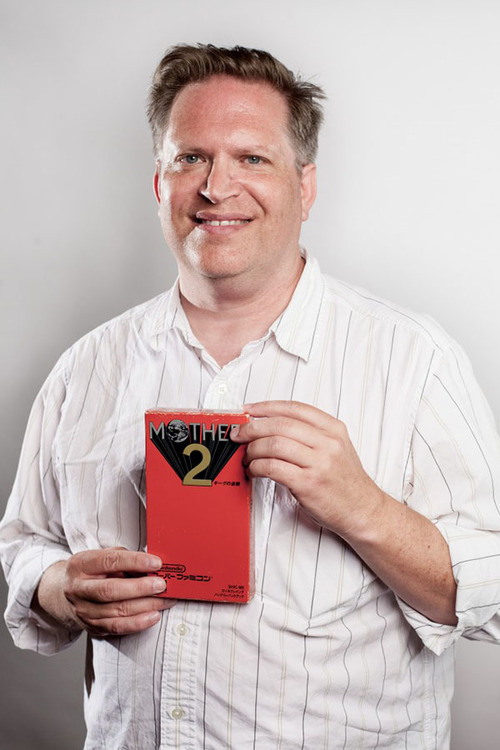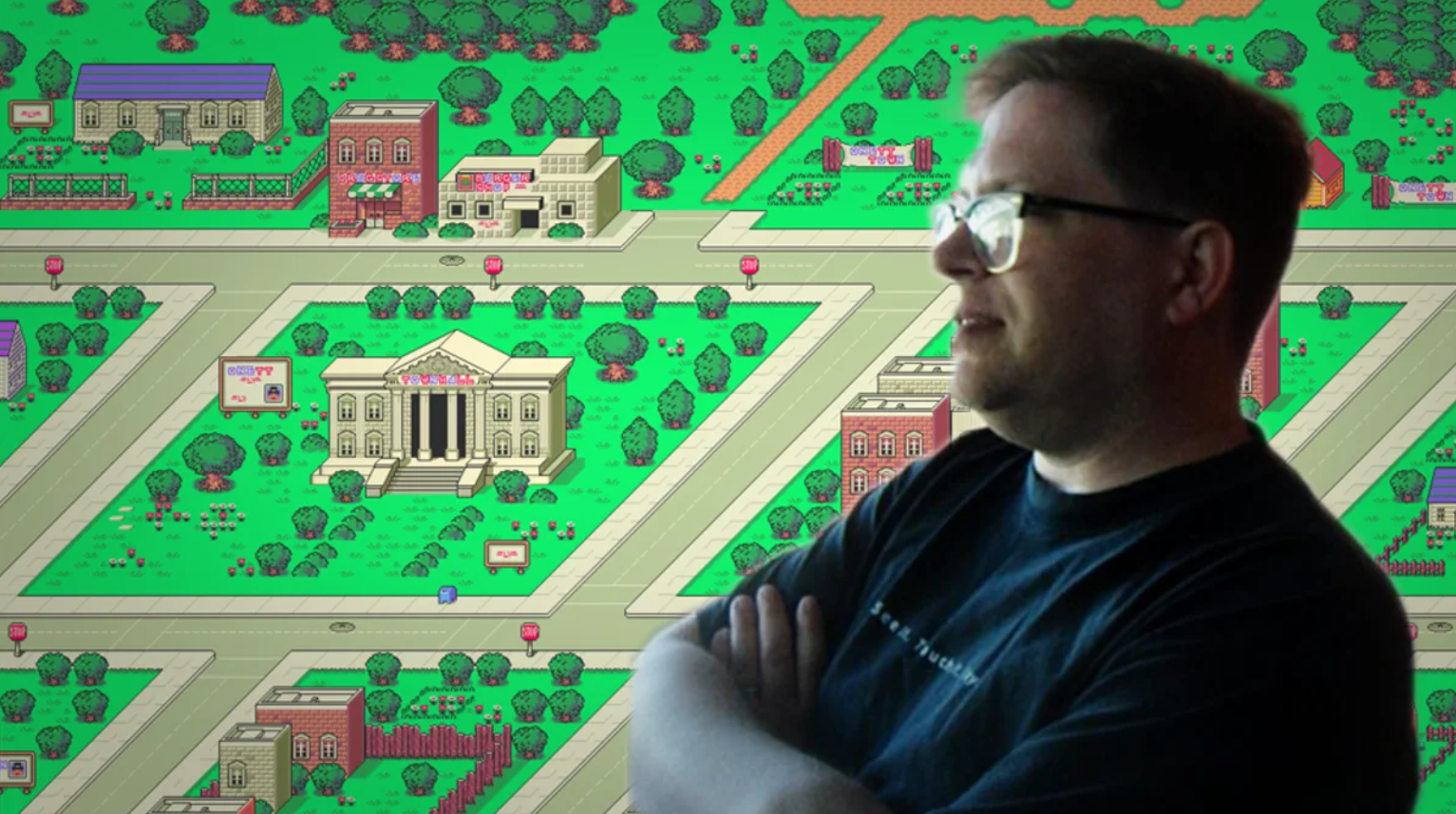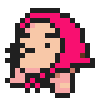Interviews about MOTHER 2
by: 8lackSphinx on 4/28/2020
Find interviews about MOTHER 2 here! Interviews include information from Shigesato Itoi, Marcus Lindblom, Kouichi Oyama, Koiji Malta, Shigeru Miyamoto, and Satoru Iwata.
Weekly Famitsu – June 19th, 1992
Shigesato Itoi talks about the details of MOTHER 2, including the return of Giygas, Auto Mode, and PSI. He also talks about his experiences with gold-digging and how it influenced the game, from including an actual gold-digger NPC to asserting, “Gold-digging itself is an RPG, you know?”. He dives into a monologue concerning the human relationships found in gold-digging and the ones to be found in-game. Itoi also talks about the theme as something akin to “…relief at having others around you, and not being some lowly human all by yourself”. By the end of the article, Itoi hints at his “next game” including a CD-ROM; whether it is MOTHER 3 is not outright stated, though it is hinted.
Weekly Famitsu – September 2nd, 1994
Shigesato Itoi offers his insight into the world of MOTHER 2, from graphics to music and even capacity issues found during development. Graphics reportedly, “…gave [us] a hard time,” and the team “stay[ed] frugal while also taking some big chances”. The graphics in total took five years to complete, from beginning to end. The music is described as “broad” yet “disorderly”; Itoi admits his music team has a plethora of tastes as opposed to himself. Itoi also realized early on that MOTHER 2 started at eight megabits, which “didn’t quite fit [their] demands”. However, performance improved as time wore on. Later in the article, Itoi reveals he was strongly opposed to representing anything in the game with symbols, as easy as that might have been considering many other RPGs took that exact route. “I didn’t want to make this game simplified by symbols,” he discloses; “When you’re in the overworld and you have to walk into a symbol to trigger the screen and open up the town, that town ends up being turned into that icon. And I especially wanted to avoid representing people through mere symbols”. As a final send off, Shigesato Itoi implores that people such as “older sisters” come back to video games, so as to not keep them exclusive to “nerdy conventions” and such; however, he urges young children to go out and experience the world for themselves as opposed to simply playing games all the time.
Weekly Famitsu – September 9th, 1994
Koiji Malta, programmer for APE Inc., and Satoru Iwata of HAL talk about the two companies working together for the production of MOTHER 2. When prompted about which company did the most work developing the game, Iwata replies, “APE had more people working on it,” though HAL had a hand in the overall systems, including the equipment used. Iwata discusses perfecting the game for the next three months; in his own words, “…the feeling of accomplishment changed”. Programming in certain complexities, such as the delivery men and bicycle, are cited as part of the perfection process.
Weekly Famitsu – November 1994
Shigeru Miyamoto weighs in on his thoughts concerning MOTHER 2, with his heavy disdain for RPGs in mind. MOTHER 2 and MOTHER 1 were the first RPGs Miyamoto ever beat, though with MOTHER 1 he “had to use the debug mode”. He describes MOTHER 2’s story as having a lasting impression on him, and praises the characters specifically for their “expressiveness” and “portray[al] [of] people’s emotions”. Though he praises the graphics for their “change in perspective”, even if a little bewildering (in the case of Fourside definitively), he is a little less complimentary of the battle system, recounting it as “lack[ing] a feeling of uniqueness or personality”.
From the Eyes of MOTHER 2; All Eyes on MOTHER 2 – Hippon Super!, November 3rd, 1994
Shigesato Itoi explains the final product of MOTHER 2 as fairly simplistic; however, the development was anything but, with particulars on the sound, text-scrolling speed, and pauses between lines. Itoi talks about the “aura” of the game as a “vivid reality”, especially in regards to the characters. MOTHER 2 is anything but “meta”, he goes on to explain, using Final Fantasy as an example. The essence of the game, succinctly, is “[the feeling of] accomplishment [when] moving forward”. Itoi describes the game as a “process”, which everything must take to work its own way.
Shigesato Itoi Tries Strawberry Tofu – 1994
Strawberry tofu makes its grand appearance in all three MOTHER games (Trout Yogurt when translated by the English localizers); the magazine interviewing Itoi decided to make him strawberry tofu to try himself. He describes it as, “It has a profound flavor that makes me feel sad…this is actually terrible”. Strangely enough, strawberry tofu, as a concept, sounds supremely better than “Trout Yogurt”. I am disappointed to say that this is not the case.
Feelings of MOTHER – Hobonichi 2009
Shigesato Itoi opens up about the deeper meaning within MOTHER 2, including some implications found in-game. He describes the game as “overwhelmingly large”, and something that cannot be beaten quickly; you must be “patient”, as he says, as you must be patient with most things in life. He understands why most people might play the game over and over again; he describes it as “the hidden taste of soup”, something that keeps people coming back for more. Itoi also describes a few overtones in the game, including the presence of Tony and, perhaps, others too; “If you live in a normal society, there are gay children, and I have a lot of [gay] friends,” Itoi begins. “So I think it’d be nice if there were such children”. He also admits as to his lack of research for the development in the game, instead citing “experience” and “scoop[ing] out a kind of ‘some feeling’ that everyone can enjoy”. Clearly, MOTHER 2 comes from a place of wisdom and know-how with the world rather than from a researched and scientific standpoint; Itoi rather seems to go with the flow of his own mind.
MOTHER 2 Virtual Console Release Discussion -March 18th, 2013
Shigesato Itoi and Satoru Iwata sit down with Mr. Nagata to discuss the re-release of MOTHER 2 on the Virtual Console. When asked, “Why MOTHER 2?” as opposed to MOTHER 1, Itoi replies, “I guess it is something that many people have played and remember enjoying”. He describes it as being picked “naturally”, for its game balance overall and also for its demand by fans. Development is also discussed, including difficulties encountered such as the map scrolling, which was, admittedly, a “simple task” as worded by Iwata; the pieces such as graphics and sound being completed but not working properly; and Iwata coming to the rescue in the final year of development. Afterwards, Miiverse is described, a program Itoi would be using in order to communicate with his fans; funnily enough, Itoi has no prior knowledge of what Miiverse even is. He seems surprised to even be met with the proposition; “I’m not even quite sure what that is but that’s nice to hear”. Iwata and Itoi express their thanks to the fans, and reminiscence fondly about their time with MOTHER. “…if there was no MOTHER, I wouldn’t have met Itoi-san,” Iwata thoughtfully muses, to the agreement of Itoi and Mr. Nagata. Itoi hopes that Miiverse will allow him the freedom to fully express his thanks to the fanbase, believing that a game medium does not allow for much in the way of verbalization (at least, for sentiments such as these).
His/Her MOTHER Feeling: Kouichi Oyama’s Opinion – July 1st, 2013
Kouichi Oyama, MOTHER 2’s art director, describes his creative process and difficulties in working with particular objects and themes. “The visuals in MOTHER 2 are pretty far from the reality of daily life,” he affirms, later adding, “…it can be something vague or unexpected”. He cites plant life, cars, and streets as an example, explaining that it lacked “realism”. Oyama admits that he did not do “extensive research” for his drawings, noting that he didn’t pay particular attention to any sort of actuality. Oyama communicates the plethora of challenges he met along the way, including cities “…demand[ing] a certain volume”, and “…words…require[ing] more space than they would have taken up in Japanese” due to the Latin alphabet used. He cites Onett as the city that demanded the most work, yet claims it as his favorite of all; “Since Onett is a city where everything is concentrated, it’s the one I like best”. Surprisingly, he prefers the art style of MOTHER 1 as opposed to MOTHER 2! “…I think the first one is better…you could say that I’ve always found the first MOTHER’s design really cool”.
Octopi! Spinal Tap! How Cult RPG EarthBound Came to America – July 23rd, 2013
EarthBound’s localization is a story of hardship, quirkiness, and improvisation. “The biggest challenge we had…was how to handle the cultural references,” Lindblom says, describing his creative process and how he tackled inputting references without the help of Shigesato Itoi. “You know what, I never actually met [Itoi],” he confesses. “…I think Itoi probably told the guys that if we had a choice between things, then just make it interesting”. It was up to Lindblom entirely, and the constant juggle between remaining faithful to the writing while also aiming to make it familiar to an American audience was daunting, to say the least. Lindblom states he was inspired by such things as bits and pieces from his youth and even his later life, such as with the birth of his daughter. He describes the entire process as “super squished”, with the game itself releasing in June 1995 and only barely beginning the localization in January. Despite the overall intensity of the project and challenges in determining what stayed and what was omitted or changed, Marcus Lindblom cheerfully asserts, “I’m really proud to have been involved with a game that was kind of low-key and gained popularity — or notoriety depending on how you want to look at it — over the years”.
Marcus Lindblom Fangamer Livestream Log – 2013
Marcus Lindblom stirs up some excitement as to the pronunciation of “Giygas” to an enthusiastic audience. “One thing I actually kind of like is the fact that there’s lots of things that people speculate about, and I would hate to kill some of that with answers…” he begins, much to the chagrin of the chat. “Oh, but answers resolve such burning questions!” one user proclaims, with another stating, “No, we’d love to hear all the juicy details”. Most offer their own interpretations and headcanons, such as “Ji-gas”, “Gee-gas”, and even “City gas”. At the very end, Lindblom quells the potential worries of the audience: “I promise that after having been away from the fan community for all these years, I’ll be around”.
The Man Who Wrote EarthBound – December 27th, 2016
Certainly, Marcus Lindblom did not anticipate the success of EarthBound years after its initial release in the West; in 1995, reviews at the time marked it as “nauseatingly cheery”, along with other dreary and disappointing adjectives. After spending four months writing the English script, reportedly, “…[for] fourteen or fifteen hours a day”, with a “…stretch of about thirty days where [he] didn’t take a day off”, to be greeted with less-than-positive reviews at the time was a damaging revelation for Lindblom. “It was pretty difficult for us, in some ways…” Lindblom affirms; however, nothing would prepare him for the overwhelming response the game received nearly twenty years later, when EarthBound was re-released on the Wii U Virtual Console on July 18th, 2013. Of course, EarthBound was not all lost and forgotten after its 1995 release; years passed and it became something of a cult classic after the fact. However, the widespread release on the Virtual Console allowed it to skyrocket its way to chart-based fame in the West. Lindblom still considers EarthBound his “finest accomplishment”, despite moving on to other projects and companies. “While it was a lot of work, it was probably the best project I ever worked on in a lot of ways,” he enthusiastically declares. Without Mr. Lindblom, together with help from Japanese writer Masayuki Miura, EarthBound would likely be lost on the American audience, for all that we know and love it for today.
Page Contributors
Echoes – Writer
8lackSphinx – Editor
Find any errors or want to contribute? Let us know in our Discord!








